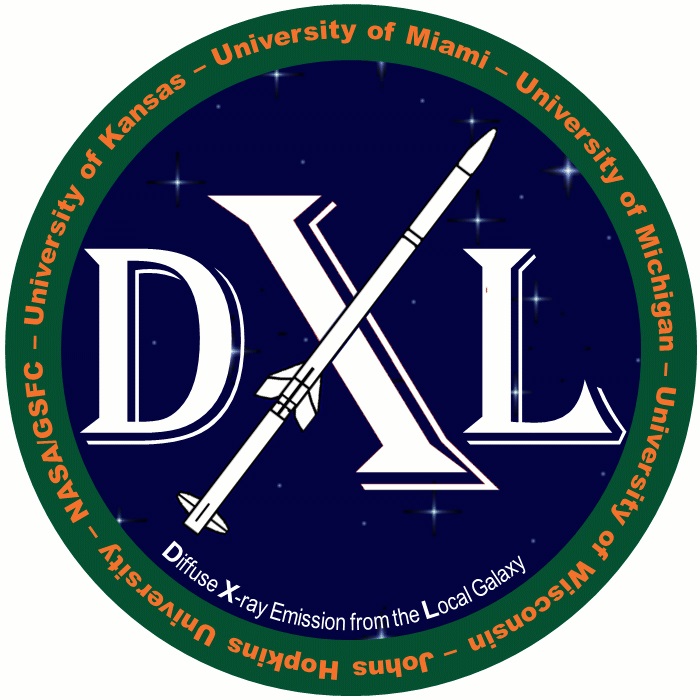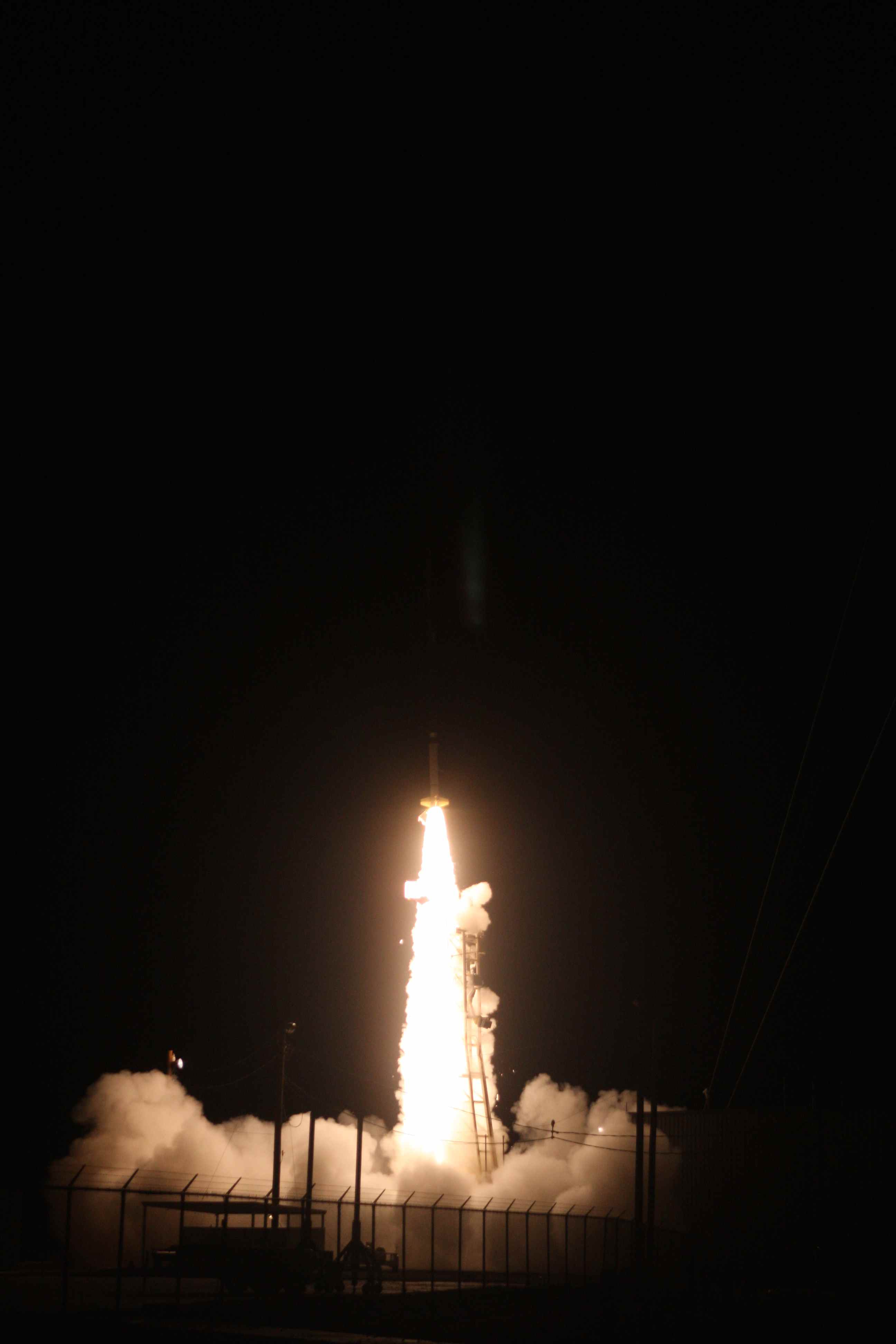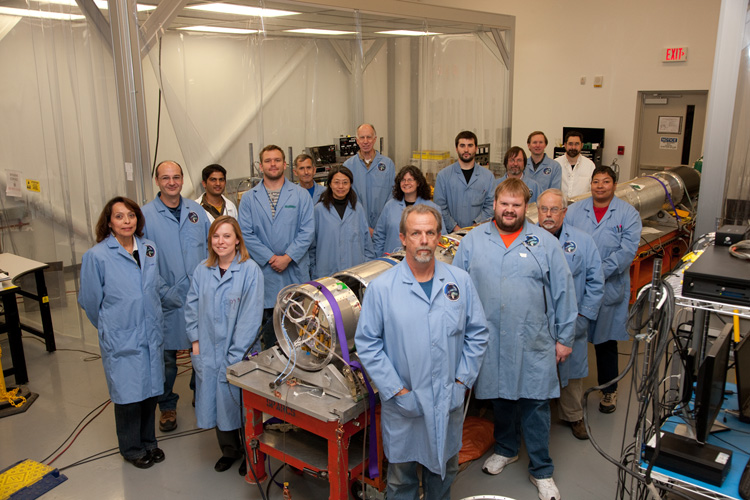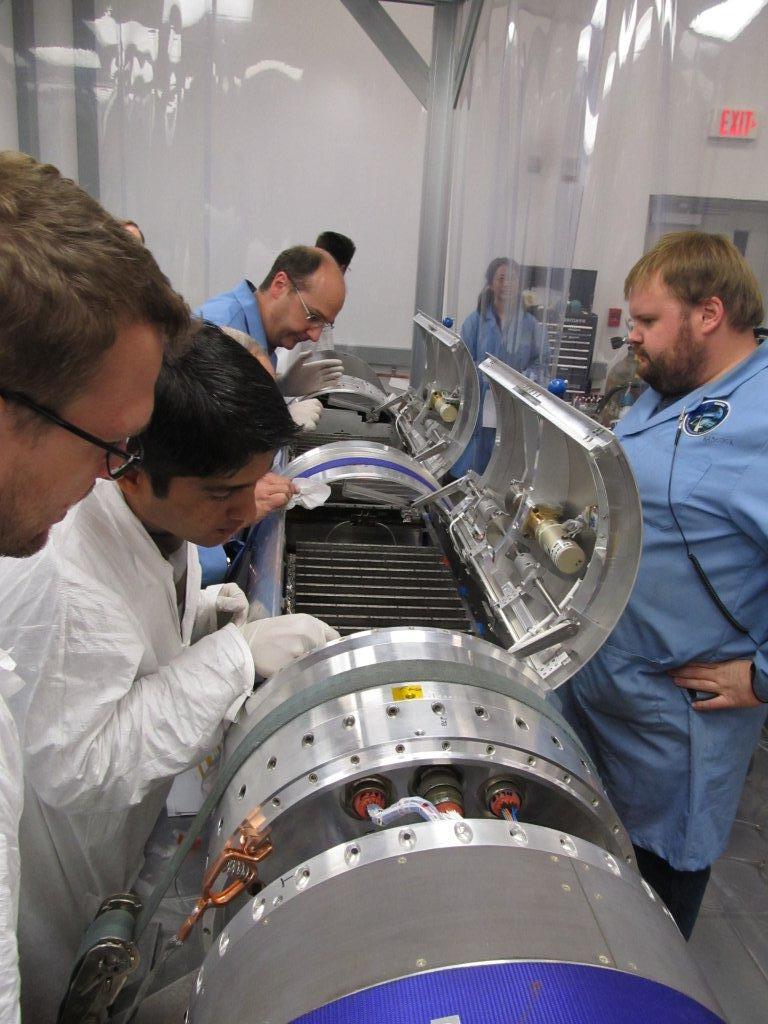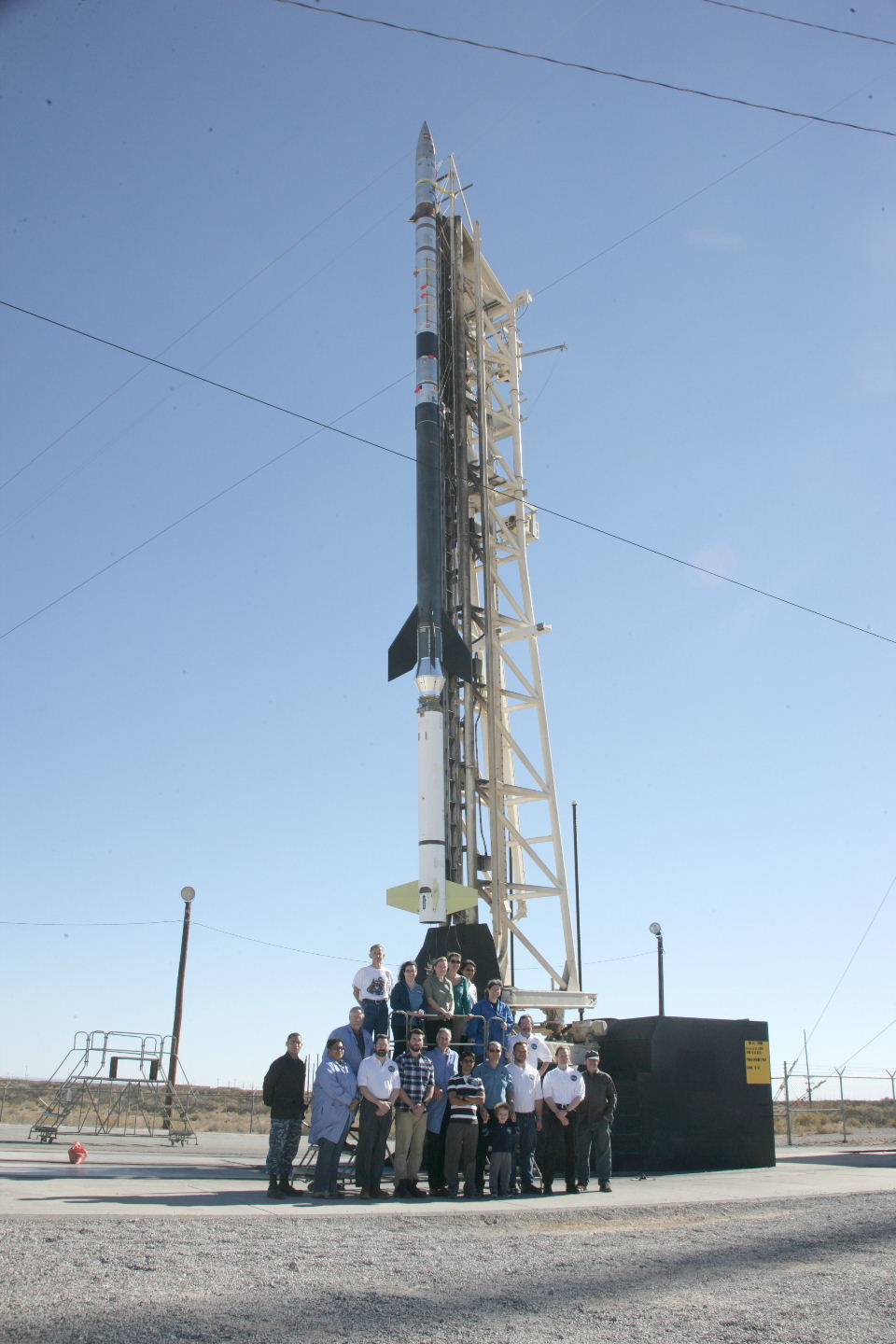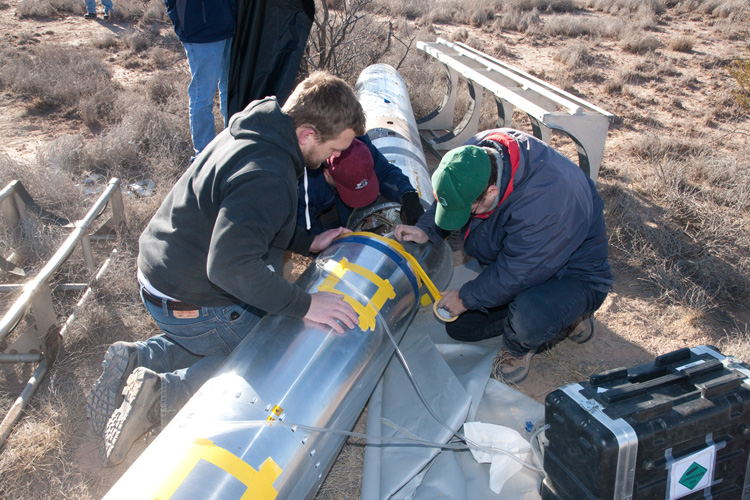Diffuse X-Ray emission from the Local galaxy (DXL)
Massimiliano Galeazzi (PI), Meng Chiao, Michael R. Collier, Thomas Cravens, Dimitra Koutroumpa, Kip Kuntz, Susan Lepri, Dan McCammon, F. Scott Porter, Ina Robertson, Steve Snowden, and Youaraj UpretyUniversity of Miami, NASA/Goddard Space Flight Center, University of Michigan, Johns Hopkins University, and University of Kansas
The first detection of extrasolar X-rays came in 1962 with the presence of a diffuse X-ray flux identified by a series of three papers in 1968-69. Subsequent investigations, primarily the Wisconsin rocket survey and the Rosat All Sky Survey (RASS) extensively studied the nature of the diffuse emission and its correlation with the neutral material in the Milky Way. X-rays observed in the 1/4 keV band in the direction of the Galactic plane must originate locally as they are easily absorbed by the neutral material in the Galactic disk and it is currently believed that a significant fraction of the 1/4 keV emission originates in an irregularly shaped cavity in the neutral hydrogen of the Galactic disk which contains the Sun and has dubbed the Local Hot Bubble (LHB). Despite the "local" origin of the emission, there is still a significant uncertainty in its nature and characteristics. The reason for this uncertainty lies primarily in the nature of the emission, which is weak and diffuse, and its superimposition on emission from other sources of the Diffuse X-ray Background (DXB). In particular, it has been essentially impossible to isolate the LHB contribution from the emission from Solar Wind Charge eXchange (SWCX) recombination. SWCX emission is generated when the highly ionized solar wind interacts with neutral or near-neutral gas in the exo-atmosphere and in the interplanetary medium. An electron is captured from the neutral atom (H or He) into an outer orbital of the highly ionized species in a quasi-resonant process and cascades to the ground state of the ion, often emitting soft X-rays in the process. The SWCX spectrum is therefore dominated by characteristic line emission that is very difficult to separate from the presumably thermal emission from the LHB.
It is, however, possible to separate the foreground SWCX emission from the extra-solar sources, such as the LHB, by looking at its spatial signature. The slowest time-varying, and thus most troublesome component of the SWCX emission originates in the interplanetary medium and should show a significant geometric variation due to the focusing of interplanetary helium. Interstellar neutrals flow through the solar system due to the motion of the heliosphere through the local interstellar cloud. Gravity significantly affects helium trajectories which execute Keplarian orbits and form a "focusing cone" downstream of the Sun centered at ~ 6◦ below the ecliptic plane. This results in a localized downstream enhancement of helium which has the direct effect of increasing the SWCX X-ray emission. By scanning the sky through the focusing cone, the spatial signature of the SWCX can be identified, allowing:
(a) a separation and subsequent investigation of LHB and SWCX emission, such as the distribution of the hot plasma within the LHB. Combining this information with the geometry of the local cavity derived from other wavelengths we can then derive the physical parameters of the plasma, that is, the pressure and density. Knowing the physical conditions of the plasma will lead to more accurate pictures of the solar neighborhood and the evolution of bubbles of hot gas produced by supernovae or stellar wind when they near the end of their existence;
(b) an estimate of the contribution of heliospheric SWCX to the University of Wisconsin and ROSAT all-sky maps of the soft x-ray background, and to every current and future investigation of extended sources.
Current and near-term satellite missions have only a tiny fraction of the grasp of the proposed payload and are thus not-suitable for the proposed investigation. In addition, the X-ray Quantum Calorimeter (XQC) sounding rocket program is currently studying the spectral signature of the soft x-ray background, including the SWCX and LHB contributions with a high resolution microcalorimeter. XQC has limited grasp and limited spatial resolution and this investigation, by verifying our spatial models of the SWCX emission, is a critical complement to the XQC results.
DXL is composed of two large area (500 cm2 each at 1 keV) thin window proportional counters that were used to produce the original UW all-sky soft X-ray maps. The large area of the proportional counters will provide excellent counting statistics when scanning the sky though the He focusing cone in the limited observing time of a sounding rocket flight. For the scan we have chosen a region sufficiently close to the galactic plane to absorb soft X-rays produced outside the solar system and its local environment (within ~100 pc), therefore minimizing the intensity and structure of the cosmic background, as indicated by the RASS. DXL was launched from White Sands Missile Range in New Mexico December 12, 2012 to ensure a scanning path through the He focusing cone when the sun is close to the maximum of its 11 year cycle.



